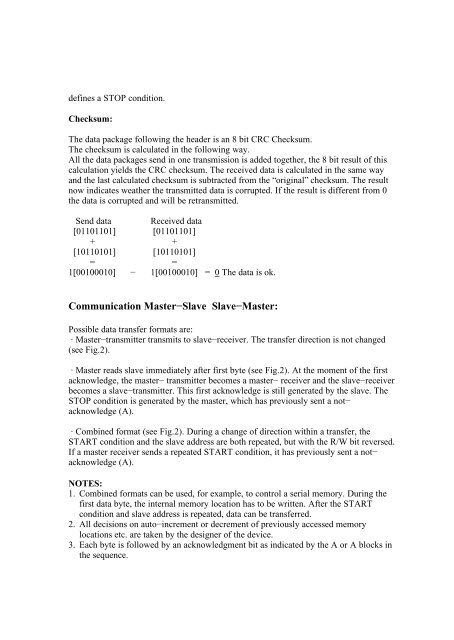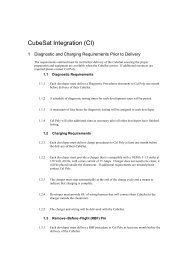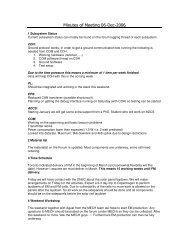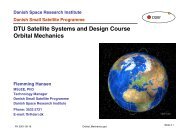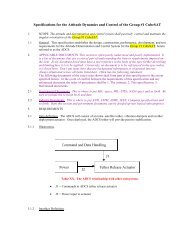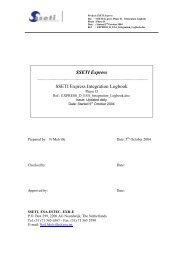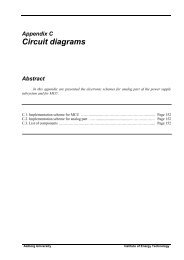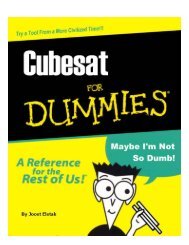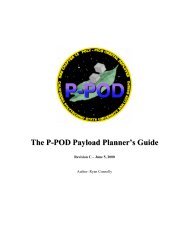The Cubesat Internal bus: The I2C - Space.aau.dk
The Cubesat Internal bus: The I2C - Space.aau.dk
The Cubesat Internal bus: The I2C - Space.aau.dk
- No tags were found...
You also want an ePaper? Increase the reach of your titles
YUMPU automatically turns print PDFs into web optimized ePapers that Google loves.
defines a STOP condition.Checksum:<strong>The</strong> data package following the header is an 8 bit CRC Checksum.<strong>The</strong> checksum is calculated in the following way.All the data packages send in one transmission is added together, the 8 bit result of thiscalculation yields the CRC checksum. <strong>The</strong> received data is calculated in the same wayand the last calculated checksum is subtracted from the “original” checksum. <strong>The</strong> resultnow indicates weather the transmitted data is corrupted. If the result is different from 0the data is corrupted and will be retransmitted.Send data Received data[01101101] [01101101]+ +[10110101] [10110101]= =1[00100010] − 1[00100010] = 0 <strong>The</strong> data is ok.Communication Master−Slave Slave−Master:Possible data transfer formats are:· Master−transmitter transmits to slave−receiver. <strong>The</strong> transfer direction is not changed(see Fig.2).· Master reads slave immediately after first byte (see Fig.2). At the moment of the firstacknowledge, the master− transmitter becomes a master− receiver and the slave−receiverbecomes a slave−transmitter. This first acknowledge is still generated by the slave. <strong>The</strong>STOP condition is generated by the master, which has previously sent a not−acknowledge (A).· Combined format (see Fig.2). During a change of direction within a transfer, theSTART condition and the slave address are both repeated, but with the R/W bit reversed.If a master receiver sends a repeated START condition, it has previously sent a not−acknowledge (A).NOTES:1. Combined formats can be used, for example, to control a serial memory. During thefirst data byte, the internal memory location has to be written. After the STARTcondition and slave address is repeated, data can be transferred.2. All decisions on auto−increment or decrement of previously accessed memorylocations etc. are taken by the designer of the device.3. Each byte is followed by an acknowledgment bit as indicated by the A or A blocks inthe sequence.


